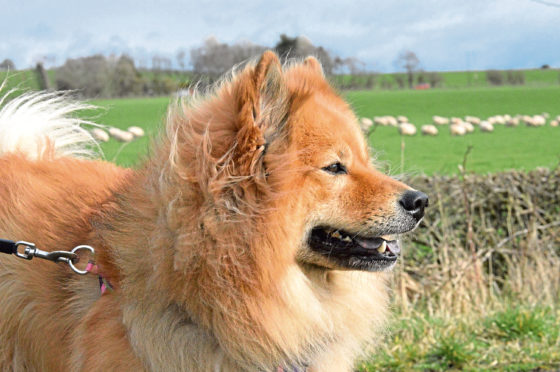Farmers across Scotland are only too well aware of the damage and pain that livestock worrying can cause.
And after much campaigning with other rural organisations, Scottish Land & Estates is pleased that the first steps have been taken by MSPs to enact tougher legislation on this matter.
A new Bill introduced to the Scottish Parliament by Emma Harper MSP could become law by the summer if it progresses through parliament in the coming months. Stage one – the first part of three – was held last Thursday with the unanimous backing of all political parties.
The proposed legislation has various elements to it, with increased fines and prison sentences available for dog owners who are found guilty of a livestock-worrying offence. It would also allow the courts to ban a convicted person from owning a dog or allowing their dog to go on agricultural land.
Rural and outdoor organisations, government, police and others have put substantial effort and resources into increasing awareness of dog attacks on livestock in an attempt to reduce the number of incidents.
This includes targeted initiatives to educate the public about the need to keep dogs on a short leash, especially during lambing and calving, as well as heightening the public’s knowledge about guidance such as the Scottish Outdoor Access Code.
Yet, recent figures from Police Scotland show that from April 2019 to March 2020, 265 incidents of livestock attacks were reported – with evidence to suggest significant under-reporting where incidents are not escalated to police.
This implies new legislation as well as continuing education is required and we’re pleased that Ms Harper, the rural economy and connectivity committee and government have agreed with our view that the penalties in the draft Bill should be increased to a maximum fine of £40,000, 12 months’ imprisonment or both.
It should be emphasised that this would be a maximum, worst-case penalty option but it would bring the Bill into line with the recent Animals and Wildlife (Penalties, Protections and Powers) (Scotland) Act 2020.
We also welcome the Scottish Government’s announcement that it has commissioned a scoping study for the creation of a National Dog Control Database.
While we hope this Bill will eventually become law in the next few months, one matter that still needs to be addressed is compensation for farmers whose livestock is attacked.
The government has said there are sufficient compensation mechanisms available, which we believe is true, but uptake has been patchy at best.
Scottish Government research found that on average, each incident costs the farmer just under £700; however, more extreme cases can cost thousands.
Additionally, there is a time cost involved when responding to incidents.
More needs to be done to ensure compensation is easily available and we all need to work within the rural sector to increase awareness of how claims can be made.
The effects of livestock worrying on farmers cannot be underestimated – attacks on sheep and other livestock by dogs not only has an obvious financial and emotional impact on farmers when their animals are killed or injured, but also has an effect on the animals themselves, their productivity and welfare.
There is also the issue of stress on the owner of the dog, and we believe new legislation and greater awareness is helpful for all involved.
As the Bill moves on to stage two, we hope it will soon enter the statute book and go some way to reducing the number of attacks we see going forward – something which is long overdue.
- Emma Steel is a policy adviser at Scottish Land & Estates.










